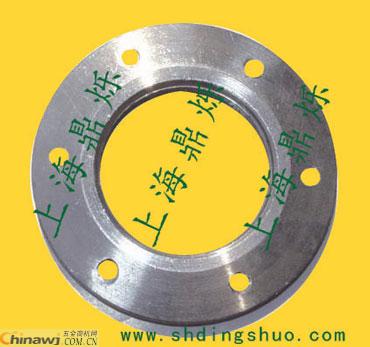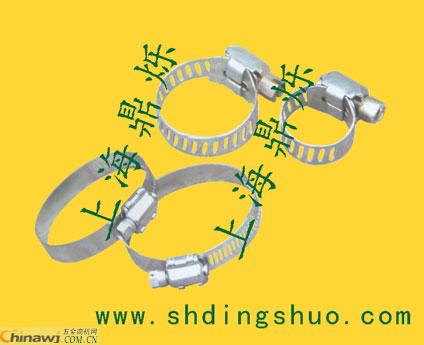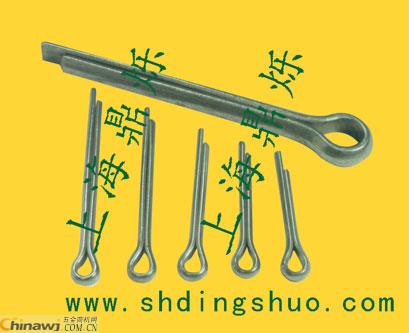**Basic Knowledge of Stainless Steel**
Stainless steel is a high-alloy steel known for its resistance to corrosion in various environments, including air and chemically aggressive media. It has an attractive surface finish and excellent corrosion resistance, eliminating the need for additional plating or coating. This makes it a versatile material used in numerous applications. Common types include 13-chrome steel and 18-chrome nickel steel, which are widely recognized for their durability and aesthetic appeal.
From a metallurgical perspective, stainless steel contains chromium, which forms a thin, protective oxide layer on the surface. This layer acts as a barrier against oxygen and other corrosive elements, preventing further oxidation and degradation of the metal. To maintain this corrosion resistance, stainless steel must contain at least 12% chromium. This threshold ensures that the passive film remains stable and effective under normal conditions.
**Numbering System of Stainless Steel**
Stainless steel grades are often identified using a combination of chemical symbols and numerical codes. For example, in China and Russia, the notation "12CrNi3A" represents a specific alloy composition. In the U.S. and Japan, stainless steels are commonly categorized into series such as 300, 400, and 200 series, each representing different structural and mechanical properties. Some grades may also be marked with letters and numbers indicating their intended use or special characteristics.
In China, the numbering system includes element symbols and descriptions, such as "P" for open-hearth steel, "F" for boiling steel, and "B" for killed steel. Special alloys like "20CrMnTi" and "60SiMn" are used for specific applications, while stainless steels like "1Cr18Ni9" indicate carbon content in thousandths. Low-carbon variants, such as "0Cr18Ni9," and ultra-low carbon versions like "0Cr17Ni13Mo" are also common in specialized uses.
The American Iron and Steel Institute (AISI) uses a three-digit system to classify stainless steels. Austenitic grades fall into the 200 and 300 series, while ferritic and martensitic grades are typically in the 400 series. Examples include 304, 316, 430, and 440C. Precipitation-hardened and high-alloy stainless steels are often named after patents or trademarks due to their unique properties.
**Corrosion Resistance and Types of Stainless Steel**
Different grades of stainless steel offer varying levels of corrosion resistance depending on their composition. For instance, 304 is a general-purpose grade used in a wide range of applications requiring good formability and corrosion resistance. 301 is known for its work hardening properties, making it ideal for high-strength applications. 302, a variant of 304, has higher carbon content for increased strength through cold working.
Other grades, like 303 and 303Se, are designed for easy machining and high luster finishes, while 304L is a low-carbon version used in welding to prevent intergranular corrosion. 309 and 310 are high-nickel grades suitable for high-temperature environments. 316 and 317, containing molybdenum, are more resistant to pitting corrosion in marine and industrial settings.
Stabilized grades like 321, 347, and 348 are used in high-temperature applications, where they resist carbide precipitation. These materials are essential in industries such as aerospace and power generation.
**Stainless Steel vs. Stainless Iron**
Stainless steel refers to both corrosion-resistant and acid-resistant steels. While stainless steel resists corrosion from weak media like water and steam, acid-resistant steel is designed to withstand harsher chemical environments such as acids and salts. The term "stainless iron" is sometimes used incorrectly to describe recycled scrap metals that have not been properly processed. Traditional detection methods, such as magnet tests, may not distinguish these materials from real stainless steel.
**Welding Stainless Steel: Tips and Precautions**
When welding stainless steel, it's important to use a DC power source with a drooping characteristic and reverse polarity. Thin plates up to 6mm can be welded easily, producing clean welds with minimal distortion. Argon gas with 99.99% purity is recommended, with flow rates adjusted based on current levels—typically 8–15 L/min. The tungsten electrode should protrude about 4–5 mm from the nozzle, and the arc length should be kept short to ensure proper shielding.
For MIG welding, pure argon or Ar+2% O₂ is preferred, with gas flow rates around 20–25 L/min. Wind protection is crucial to avoid porosity caused by drafts. Flux-cored wire welding uses CO₂ gas, with a typical flow rate of 20–25 L/min. Proper wire feed tension and electrode distance are also important for consistent results.
**Deep Drawing of Stainless Steel Sheets**
Stainless steel sheets are challenging to deep draw due to their high yield strength and tendency to work-harden. This can lead to wrinkling, cracking, and adhesive wear during the process. Key solutions involve selecting appropriate mold materials, such as cast aluminum bronze or tungsten carbide inserts, and applying surface treatments like nitriding or electrochemical polishing. Lower surface roughness improves adhesion resistance and reduces friction. Polishing accounts for a significant portion of mold manufacturing, ensuring high-quality finished products.
Recent advancements in polishing technologies, such as ultrasonic and electrolytic polishing, allow for faster and more precise surface finishing. These techniques enhance wear resistance and improve the dimensional accuracy of the final product. By combining proper material selection, heat treatment, and surface processing, manufacturers can significantly extend mold life and reduce defects during deep drawing operations.




Http://news.chinawj.com.cn Submission:
Stainless steel is a high-alloy steel known for its resistance to corrosion in various environments, including air and chemically aggressive media. It has an attractive surface finish and excellent corrosion resistance, eliminating the need for additional plating or coating. This makes it a versatile material used in numerous applications. Common types include 13-chrome steel and 18-chrome nickel steel, which are widely recognized for their durability and aesthetic appeal.
From a metallurgical perspective, stainless steel contains chromium, which forms a thin, protective oxide layer on the surface. This layer acts as a barrier against oxygen and other corrosive elements, preventing further oxidation and degradation of the metal. To maintain this corrosion resistance, stainless steel must contain at least 12% chromium. This threshold ensures that the passive film remains stable and effective under normal conditions.
**Numbering System of Stainless Steel**
Stainless steel grades are often identified using a combination of chemical symbols and numerical codes. For example, in China and Russia, the notation "12CrNi3A" represents a specific alloy composition. In the U.S. and Japan, stainless steels are commonly categorized into series such as 300, 400, and 200 series, each representing different structural and mechanical properties. Some grades may also be marked with letters and numbers indicating their intended use or special characteristics.
In China, the numbering system includes element symbols and descriptions, such as "P" for open-hearth steel, "F" for boiling steel, and "B" for killed steel. Special alloys like "20CrMnTi" and "60SiMn" are used for specific applications, while stainless steels like "1Cr18Ni9" indicate carbon content in thousandths. Low-carbon variants, such as "0Cr18Ni9," and ultra-low carbon versions like "0Cr17Ni13Mo" are also common in specialized uses.
The American Iron and Steel Institute (AISI) uses a three-digit system to classify stainless steels. Austenitic grades fall into the 200 and 300 series, while ferritic and martensitic grades are typically in the 400 series. Examples include 304, 316, 430, and 440C. Precipitation-hardened and high-alloy stainless steels are often named after patents or trademarks due to their unique properties.
**Corrosion Resistance and Types of Stainless Steel**
Different grades of stainless steel offer varying levels of corrosion resistance depending on their composition. For instance, 304 is a general-purpose grade used in a wide range of applications requiring good formability and corrosion resistance. 301 is known for its work hardening properties, making it ideal for high-strength applications. 302, a variant of 304, has higher carbon content for increased strength through cold working.
Other grades, like 303 and 303Se, are designed for easy machining and high luster finishes, while 304L is a low-carbon version used in welding to prevent intergranular corrosion. 309 and 310 are high-nickel grades suitable for high-temperature environments. 316 and 317, containing molybdenum, are more resistant to pitting corrosion in marine and industrial settings.
Stabilized grades like 321, 347, and 348 are used in high-temperature applications, where they resist carbide precipitation. These materials are essential in industries such as aerospace and power generation.
**Stainless Steel vs. Stainless Iron**
Stainless steel refers to both corrosion-resistant and acid-resistant steels. While stainless steel resists corrosion from weak media like water and steam, acid-resistant steel is designed to withstand harsher chemical environments such as acids and salts. The term "stainless iron" is sometimes used incorrectly to describe recycled scrap metals that have not been properly processed. Traditional detection methods, such as magnet tests, may not distinguish these materials from real stainless steel.
**Welding Stainless Steel: Tips and Precautions**
When welding stainless steel, it's important to use a DC power source with a drooping characteristic and reverse polarity. Thin plates up to 6mm can be welded easily, producing clean welds with minimal distortion. Argon gas with 99.99% purity is recommended, with flow rates adjusted based on current levels—typically 8–15 L/min. The tungsten electrode should protrude about 4–5 mm from the nozzle, and the arc length should be kept short to ensure proper shielding.
For MIG welding, pure argon or Ar+2% O₂ is preferred, with gas flow rates around 20–25 L/min. Wind protection is crucial to avoid porosity caused by drafts. Flux-cored wire welding uses CO₂ gas, with a typical flow rate of 20–25 L/min. Proper wire feed tension and electrode distance are also important for consistent results.
**Deep Drawing of Stainless Steel Sheets**
Stainless steel sheets are challenging to deep draw due to their high yield strength and tendency to work-harden. This can lead to wrinkling, cracking, and adhesive wear during the process. Key solutions involve selecting appropriate mold materials, such as cast aluminum bronze or tungsten carbide inserts, and applying surface treatments like nitriding or electrochemical polishing. Lower surface roughness improves adhesion resistance and reduces friction. Polishing accounts for a significant portion of mold manufacturing, ensuring high-quality finished products.
Recent advancements in polishing technologies, such as ultrasonic and electrolytic polishing, allow for faster and more precise surface finishing. These techniques enhance wear resistance and improve the dimensional accuracy of the final product. By combining proper material selection, heat treatment, and surface processing, manufacturers can significantly extend mold life and reduce defects during deep drawing operations.




Http://news.chinawj.com.cn Submission:
Pixel-level mosaic filter, reference color filter RGB channel arrangement, will be a number of micro-, meter-level spectral channels in accordance with certain rules arranged into a spectral period, a number of spectral period to mosaic, the way arranged on the filter surface. The physical size of the filter can be customized according to the pixel size of the detector, so that the spectral channel can be aligned with the detector pixel one by one.
Pixel Mosaic Filter,Pixel Filter Picsart,Multi Notch Filter,Channel Master Filter
Changchun Champion Optics Co.,Ltd , https://www.champion-optics.com